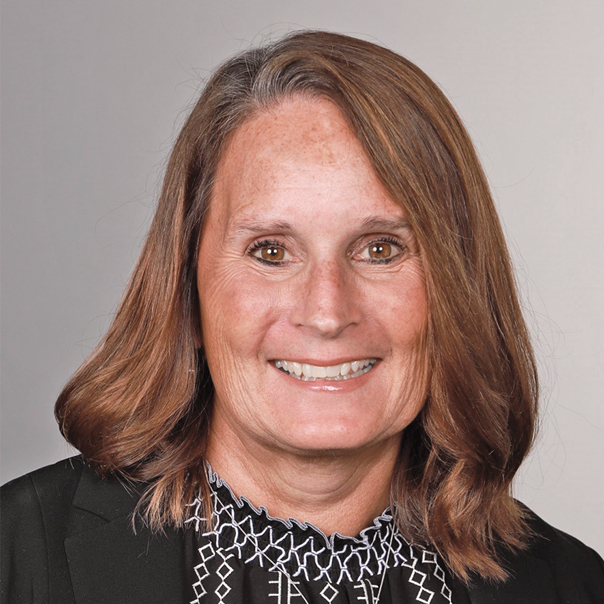The conventional American dream of homeownership remains a constant, but younger buyers are struggling to break into today’s housing market. At 36, the median age of today’s first-time homebuyer is at an all-time high. There are many factors to blame for this trend, but too much coffee and avocado toast are not among them.
Low housing inventory, the COVID-19 pandemic, higher interest rates and increased debt are just a few of the real factors applying pressure on young homebuyers. There are positive signs in the economy, however, leading many to believe relief is in sight.
With many clues pointing to the housing market opening up for more millennial buyers in 2024, including potentially lower interest rates, financial institutions must prepare. By building an optimal technology stack, combined with much-needed educational support, mortgage originators are well-positioned to help these new buyers on their homebuying journey. Here are some key areas of focus for financial institutions to prepare for a new wave of mortgage applications.
Personalized experiences
The Mortgage Bankers Association expects a rebound in the mortgage originations for 2024, with a 19% increase in total volume this year over 2023. Financial institutions can prepare by investing in scalable technologies such as setting up parameters for automatic prequalification, building self-service portals for document management and focusing on personalized experiences.
The first step is to ensure lenders deliver personalized experiences and meet young buyers where they are, whether that be online, in a branch or even over the phone. It is widely known, across many industries, that younger generations are increasingly demanding personalization in customer experience, and that it drives loyalty and boosts conversion rates. Establishing personalized mortgage originator pages is an easy way to step into this space, offering streamlined communication, faster response times and increased referrals.
Once inquiries turn into leads, originators must utilize their tech stack to nurture these leads and turn them into clients. If a borrower encounters any technical obstacles from application through the onboarding process, the risk of losing the lead to a competitor increases significantly.
As borrowers complete applications and move through the approvals process, automation and streamlined procedures are crucial. To process loans quickly and underwrite more efficiently, lenders can leverage integrated services, embrace workflow automation and deploy paperless loan files for a more streamlined and effective operation. An added benefit is that back-office team members can use their newly found time to address strategic priorities, rather than focusing on manual tasks.
Finally, systems that migrate borrower information from the point-of-sale software to the loan origination system provide many benefits, such as reducing human error, decreasing the chance for compliance issues and ultimately speeding up approvals. With speed being important to younger homebuyers, efficiencies must be applied wherever possible to facilitate a stronger borrower experience.
Efficient technology
It is crucial that financial institutions offer the best of both worlds, meaning delivering the human touch of financial services, combined with a technology stack suitable for the needs of younger generations. The key to this is collaboration.
Financial institutions are supportive of collaboration with fintech innovators and the decision-makers at these institutions believe it has made them more efficient, according to a 2023 Finastra survey of 956 professionals. Further, 88% agree that collaboration has been a driver for success, pointing to a significant embrace of the concept of open finance.
Mortgage originators can focus on what they do best — relationship banking — while working with fintech partners to deliver innovative services and enhanced functionality. In the mortgage space, these services include chatbots for quick questions outside of regular hours, automatic pre-approvals, mobile-friendly applications and electronic document management.
Electronic closings are beginning to make an impact as well, offering buyers a chance to sign most of their documents electronically, streamlining the entire process and eliminating the need for long, complicated settlement meetings. The friendly face and knowledge of a trusted mortgage originator, combined with efficient technology, enables lenders to provide the experience younger buyers both want and expect.
Educational opportunities
The concept of environmental, social, and governance or ESG is nothing new to bankers. In the Finastra survey, 82% of financial decision-makers say that the banking sector is about more than just finance, and institutions have a duty to support the communities they serve.
This indicates that many mortgage teams share a common belief that they must offer more than just financing. Educational opportunities such as credit coaching, savings tools and financial literacy courses all help lenders build meaningful relationships with their potential clients. With millennials at a structural disadvantage compared to previous generations, this financial knowledge is critical to their success.
Sometimes, it is as simple as offering free first-time homebuyer courses, where a trusted mortgage originator shares the steps that buyers must take to secure a mortgage. Similar to meeting clients where they are during the application process, lenders should deliver these courses in a variety of formats, whether it’s live in-person, virtual or pre-recorded. The pre-recorded courses can be leveraged as sales tools on a financial institution’s website or social media channels as well, giving lenders a chance to connect with buyers indefinitely.
Financial institutions can also connect young buyers with financial planners to help create debt repayment plans and establish a meaningful budget. This helps build trust with the lender, and ideally, the client will come back to apply for a mortgage when ready. Millennials are currently the largest generation of Americans, surpassing baby boomers for the first time in recent years. With increased mortgage application volumes coming, financial institutions must embrace the right mix of technology and human interaction to deliver the borrower experience the country’s largest generation has come to expect. ●
Author
-

Mary Kay Theriault is senior director of product management for Mortgagebot at Finastra, where she is responsible for the strategy and direction of Finastra’s industry leading mortgage solutions. With more than 20 years at Finastra, Theriault brings comprehensive mortgage lending knowledge and industry expertise to the role.
View all posts






